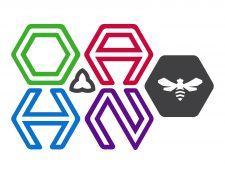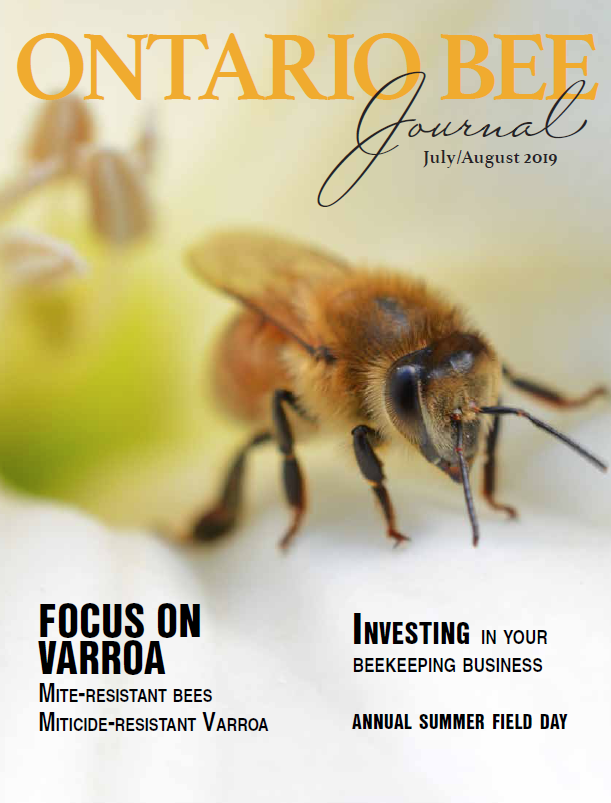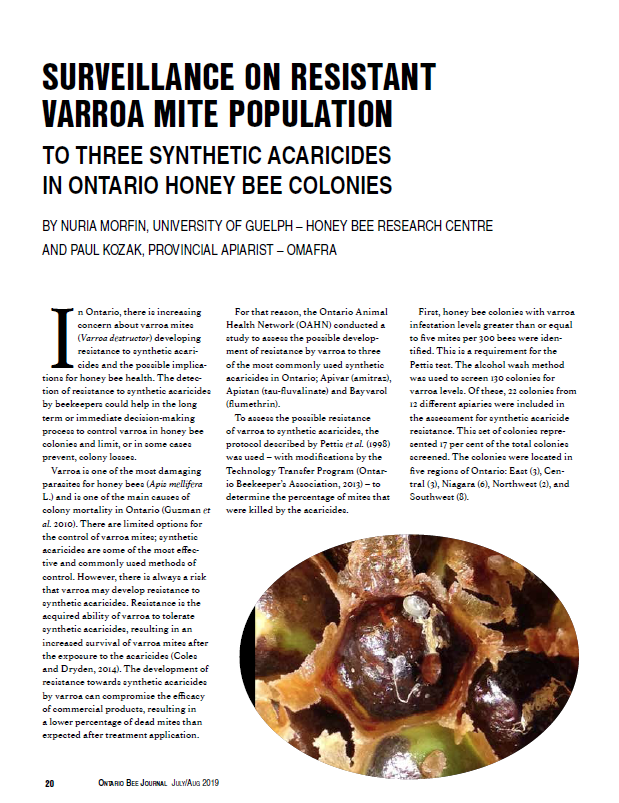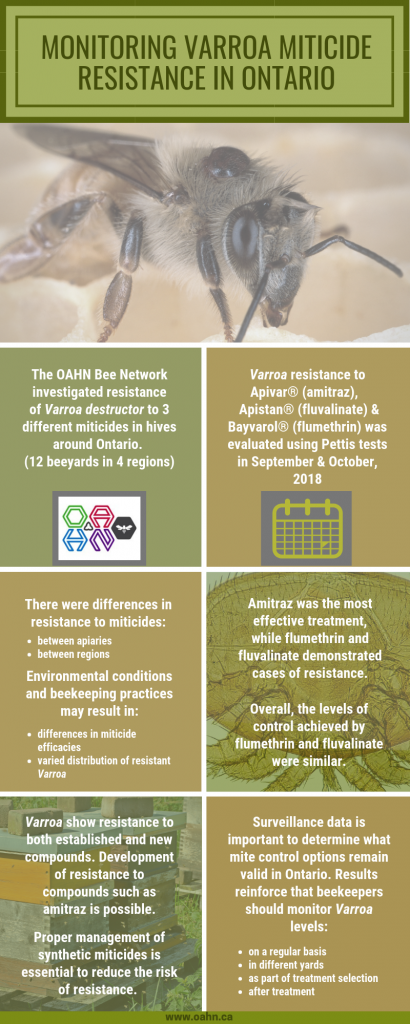OAHN Bee Network Research Project: Surveillance on resistant Varroa destructor mite population to three synthetic acaricides in Ontario
OAHN Bee network research project 2018-2019: Surveillance on resistant Varroa destructor mite population to synthetic acaricides in Ontario
Project Collaborators:
- Devan Rawn (Shelter Valley Bee Co.; Ontario Bee Breeders Association)
- Ernesto Guzman (University of Guelph – Honey Bee Research Centre)
- Jim Chaput (Ontario Ministry of Agriculture, Food and Rural Affairs)
- Les Eccles (Technology Transfer Program – Ontario Beekeepers’ Association)
- Nuria Morfin (University of Guelph – Honey Bee Research Centre)
- Paul Kozak (Ontario Ministry of Agriculture, Food and Rural Affairs)
- Tatiana Petukhova (Ontario Beekeepers’ Association)
- Tim Pasma (Ontario Ministry of Agriculture, Food and Rural Affairs)
Varroa destructor is the most damaging parasite for honey bees (Apis mellifera L.) and is one of the main causes of colony mortality in Ontario. There are limited options for the control of V. destructor, and synthetic acaricides are one of the most commonly used treatments for its control. However, there is a potential risk of V. destructor to develop resistance to synthetic acaricides, thus, the aim of this study was to assess resistance to three of the most commonly used acaricides (amitraz, Apivar™; tau-fluvalinate, Apistan®; and flumethrin, Bayvarol®) in V. destructor samples collected from honey bee colonies located in Ontario. The results demonstrated differences in the percentage of dead mites by the effect of the three tested acaricides, being amitraz the one with higher percentage of dead mites (92%), compared to tau-fluvalinate (72%) and flumethrin (78%). Also, differences in the percentage of dead mites by the three synthetic acaricides were noted in samples taken from different beekeeping operations, and between different regions in Ontario. The results highlight the importance of assessing resistance to acaricides in different populations of V. destructor as a tool that can be used to inform decisions on V. destructor treatments in order to implement a successful Integrated Pest Management (IPM) approach to beekeeping.






